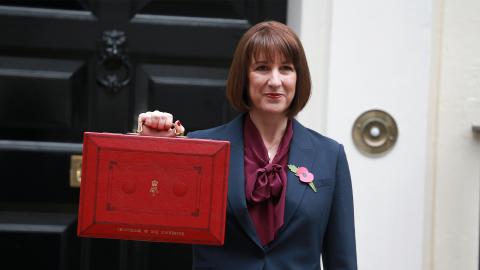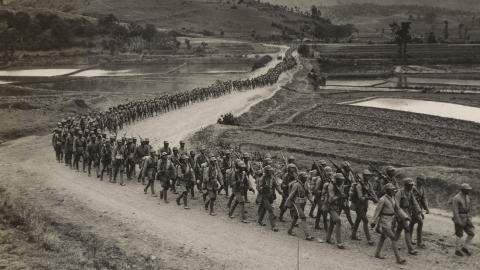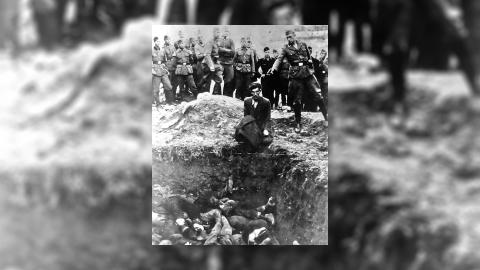US Entry and Alliance
I have said this before, but I shall say it again and again: your boys are not going to be sent into any foreign wars.
Roosevelt, 1940
In September 1939, the ideological affinity between the USA and Britain was unquestionable, yet large swathes of the US public, media and politicians were deeply isolationist. With hindsight, many people resented America's involvement in the First World War. The desire to 'avoid foreign entanglements' and focus on domestic issues was widespread.
When war broke out in Europe, US President Franklin Roosevelt recognised that the conflict threatened US security, and looked for ways to help the European democracies without direct involvement in the war. This necessity increased in June 1940, when the Fall of France left Britain as the only democracy standing between Nazi Germany and America. In 1939, the Fourth Neutrality Act authorised the US to trade arms with belligerents provided that the countries paid in cash and collected them. In March 1941, Roosevelt moved further towards making the US the 'arsenal of democracy' with the Lend-Lease Act, which permitted the lending, leasing, selling, or bartering of arms, ammunition and food to any country whose defence the President deems vital to the defence of the US.
The US was sucked further towards the conflict when its navy and air force began to 'escort' British convoys which transported Lend-Lease material across the Atlantic, protecting them from German submarines. Roosevelt's announcement of a 'shoot on sight' policy in September 1941 following an attack on the USS Greer enraged isolationist senators; they alleged that Roosevelt was deliberately provoking skirmishes with the Germans. Meanwhile, Churchill repeatedly attempted to convince Roosevelt to enter the war. At the August 1941 Atlantic Conference, the two leaders composed a charter for the post-war world; Roosevelt tackled the thorny issue of the British Empire, promoting the recognition of the right of all peoples to choose the government under which they will live.
Churchill did not have to wait long. After the bombing of the US Pacific fleet at Pearl Harbor in December 1941, only one congressman opposed the declaration of war; the vote in the senate was unanimous. Hitler's declaration of war on the US, which came four days later, was actually a blessing in disguise for Roosevelt; it enabled him to legitimately pursue a 'Germany first' strategy. In November 1942, Operation Torch, the invasion of North Africa, became the first US military offensive of the war in the West. Allied troops slowly cornered German forces in North Africa, who surrendered in Tunisia in May 1943. The joint British-US victory, costly and hard fought as it was, was invaluable in mobilising US public opinion behind the war effort.
By the beginning of 1943, the opening of a 'second front' was a pressing and divisive issue. Although both leaders recognised the urgent need to relieve the pressure on Russia on the Eastern Front, Churchill favoured an attack through Italy – the 'soft underbelly' of the Axis – while Roosevelt pushed for an assault on France. At the Casablanca conference in January 1943, Churchill effectively won the argument. It was decided that operations in the Mediterranean would continue once victory was achieved in North Africa. The success of Operation Husky, the invasion of Sicily launched in July 1943, allowed the Allies to invade the Italian mainland, capturing Rome on 4 June 1944.
Although various points of ideological and strategic difference arose between Britain and the US during the war – most notably regarding the British Empire, the British attitude in Burma and India and the shape of the post-war world – it is indisputable that Churchill and Roosevelt enjoyed a deep personal bond. The two countries they led shared the same fundamental commitment to cooperate in order to rid the world of international fascism.
Did you know?
In his 1941 Navy Day address, Roosevelt claimed to possess a secret Nazi map which demonstrated Hitler's intention to conquer Central and South America, dividing it into five vassal states under German domination and placing the US in direct danger.
















